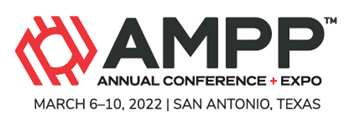Search
Products tagged with 'abrasives'
View as
Sort by
Display
per page
A Study of Various Parameters Affecting the Performance of Liquid-Applied Epoxy Pipeline Coatings
Product Number:
51323-19474-SG
Publication Date:
2023
$20.00
Abrasive Selection Economics – Cost or Price?
Product Number:
51219-191-SG
Publication Date:
2019
$20.00
AMPP TR21500-2022, Surface Preparation by Encapsulated Blast Media for Repair of Existing Coatings on Railcars
Product Number:
AMPP TR21500-2022
Publication Date:
2022
$109.00
An In-Depth Look at Standards Frequently Encountered by Industrial Painters
Product Number:
51218-164-SG
Publication Date:
2018
$20.00
Correlating Qualitative Surface Profile Assessment Methods To Quantitative Methodology On Prepared Concrete
Product Number:
51322-17606-SG
Publication Date:
2022
$20.00
Developments In Abrasive Blast Nozzle Technology: Reducing Noise Exposure While Preserving Nozzle Performance And Usability
Product Number:
51322-18086-SG
Publication Date:
2022
$20.00
NACE No. 4/SSPC-SP 7-2006-SG (Chinese), Brush-Off Blast Cleaning
Product Number:
21132-SG
ISBN:
1-57590-102-1
Publication Date:
2006
$179.00
SSPC- SP 6/NACE No. 3-2006, Commercial Blast Cleaning
Product Number:
21067-SG
ISBN:
1-57590-109-9
Publication Date:
2006
$109.00
SSPC-SP 10 /NACE No. 2-2006, Near-White Metal Blast Cleaning
Product Number:
21066-SG
Publication Date:
2006
$179.00
SSPC-SP 14/NACE No. 8-2006, Industrial Blast Cleaning
Product Number:
21088-SG
ISBN:
1-57590-077-7
$109.00
SSPC-TR2/NACE Publication TR6G198-1998, Wet Abrasive Blast Cleaning
Product Number:
24199-SG
$179.00












